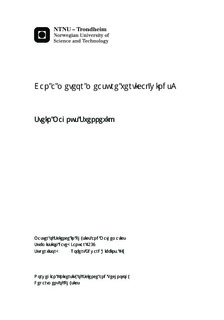Can a meteor measure vertical winds?
Master thesis
Permanent lenke
http://hdl.handle.net/11250/2352009Utgivelsesdato
2014Metadata
Vis full innførselSamlinger
- Institutt for fysikk [2695]
Sammendrag
In the first part of this thesis the zonal and meridional tilt of the SKiYMETMeteor Radar at Dragvoll (63.4 N 10.5 E) has been found using two differentmethods.The average zenith angle model found the zonal tilt to be 0.22 ± 0.11 degrees towardsthe east and the meridional tilt to be 0.09 ± 0.11 degrees towards the north.The results of this model should be treated with skepticism as the seasonal variationsof especially the meridional tilt was large.The zenith angle model found the zonal tilt to be 0.15 ± 0.21 degrees towards theeast and the meridional tilt to be 0.62 ± 0.24 degrees towards the south.In the second part the tilt found from the zenith angle model was used to investigatethe changes such a tilt would cause to the meridional, zonal and verticalwinds. And whether the vertical wind would show a strong correlation with eitherthe meridional or zonal wind.The vertical wind seems to be oscillating with a main period of 24 hours while themeridional and zonal wind has a 12 hour oscillation period, this might show thatthe contamination from the horizontal winds are not the dominant driving force inthe winds. The changes the tilt had on the vertical wind showed an oscillation withthe same period as the meridional winds. The changes to the zonal and meridionalwind due to the tilt was neglectable.The daily vertical background wind was obtained and analyzed. The seasonal verticalbackground wind for the fall of 2012 was found to be weak and downwards,winter was stronger and downwards, spring 2013 was approximately zero and forsummer 2013 a upwards wind was measured.The data was compared to data found by Balsley and Riddle (1984). The result ofthe comparison was that the resulting winds from this thesis was stronger and hasthe opposite direction of the data by Balsley and Riddle (1984).
